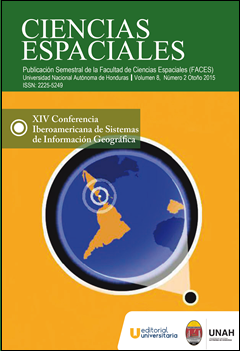Cultural Heritage and GIS: visualization scales and preservation
DOI:
https://doi.org/10.5377/ce.v8i2.2095Keywords:
cultural and urban patrimony, visualization of information, digital cultureAbstract
The city has been recognized as the biggest and more lasting realization of culture, where certain artifacts become over a period of time as of decisive importance, mainly when located with some spatial proximity nexus which can incorporate and differentiate themselves from the set, these ones can be recognized through cultural preservation zones. It is a consensus the necessary preservation of historical urban cultural patrimony, but experiences of negligence are also known with the pre-existing ones, mainly for certain lack of methods applicable to the conceptions and architecture and urban projects capable of maintaining the unity of the valuable historical surroundings. Thus, this study aims at advancing about visualization mechanisms, availability and popularization of data of urban environment of historical and cultural interest, where spatial analysis are possible for a better reading of its interest zones related to valorization and preservation of patrimony. This study aims at elaborating a GIS of the cultural patrimony, architectural and urban, of the city of Pelotas, Brazil, availability of information on the Internet about more than 2 thousands properties of interest for the preservation, concentrated in the eclectic segment of the end of the XIX century and beginning of the XX century. It is has been implemented three visualization scales, including all urban area, the preservation zones and one interest area in the interior of one zone, with increasing levels of resolution. At the same time, still an exploratory profile, it has been carried out grouping analysis, associating local and typological factors, identifying focus of concentration and rarefaction of buildings and values, resulting in spatial differentiation given by typologies and varied morphologies. It has also been explored resources of availability of GIS on the Internet, through Google Earth API resources. This study groups investigation with extension, generating knowledge and supporting public policies of the local Municipality, Secretary of Culture, bringing together preservation practices and valorization of patrimony to the community.
Revista Ciencias Espaciales, Volumen 8, Número 2 Otoño, 2015; 41-58
Downloads
1503




